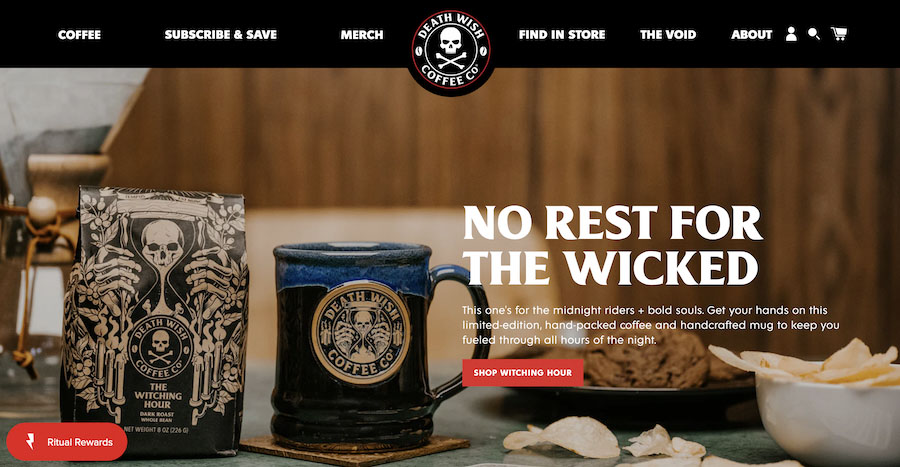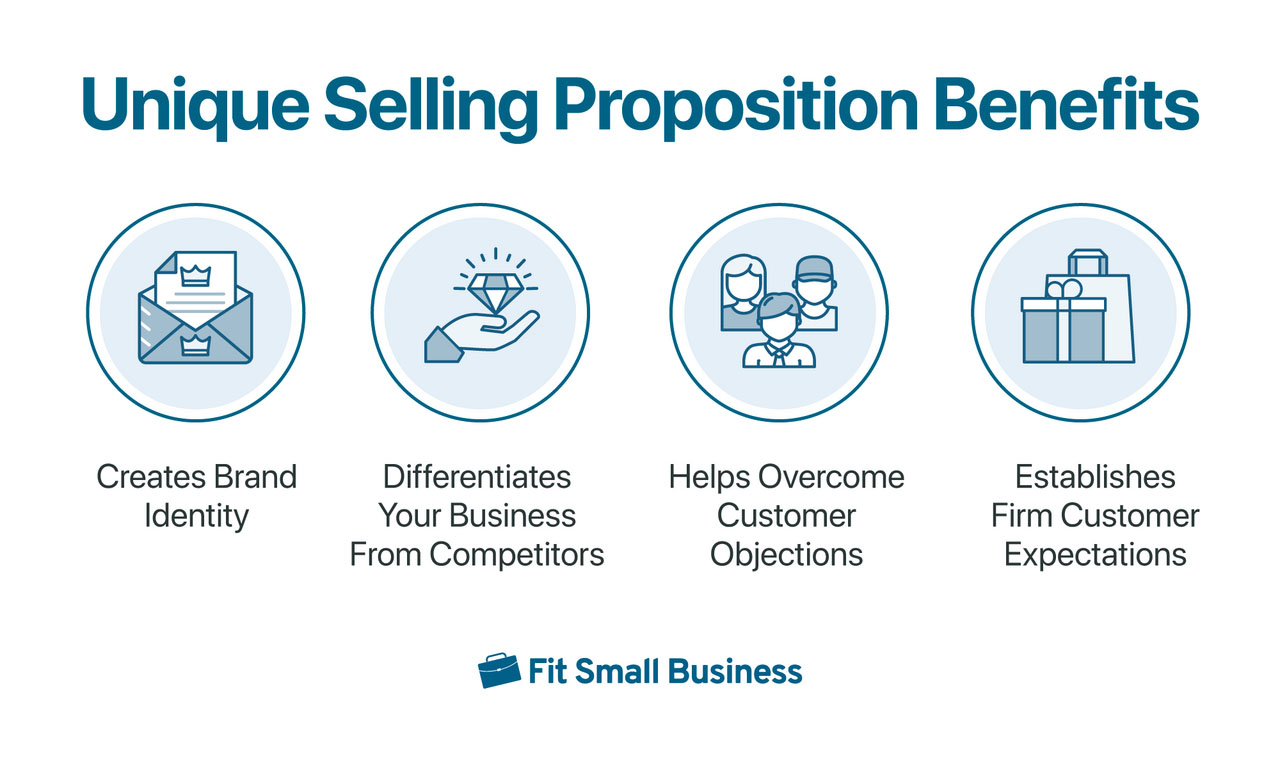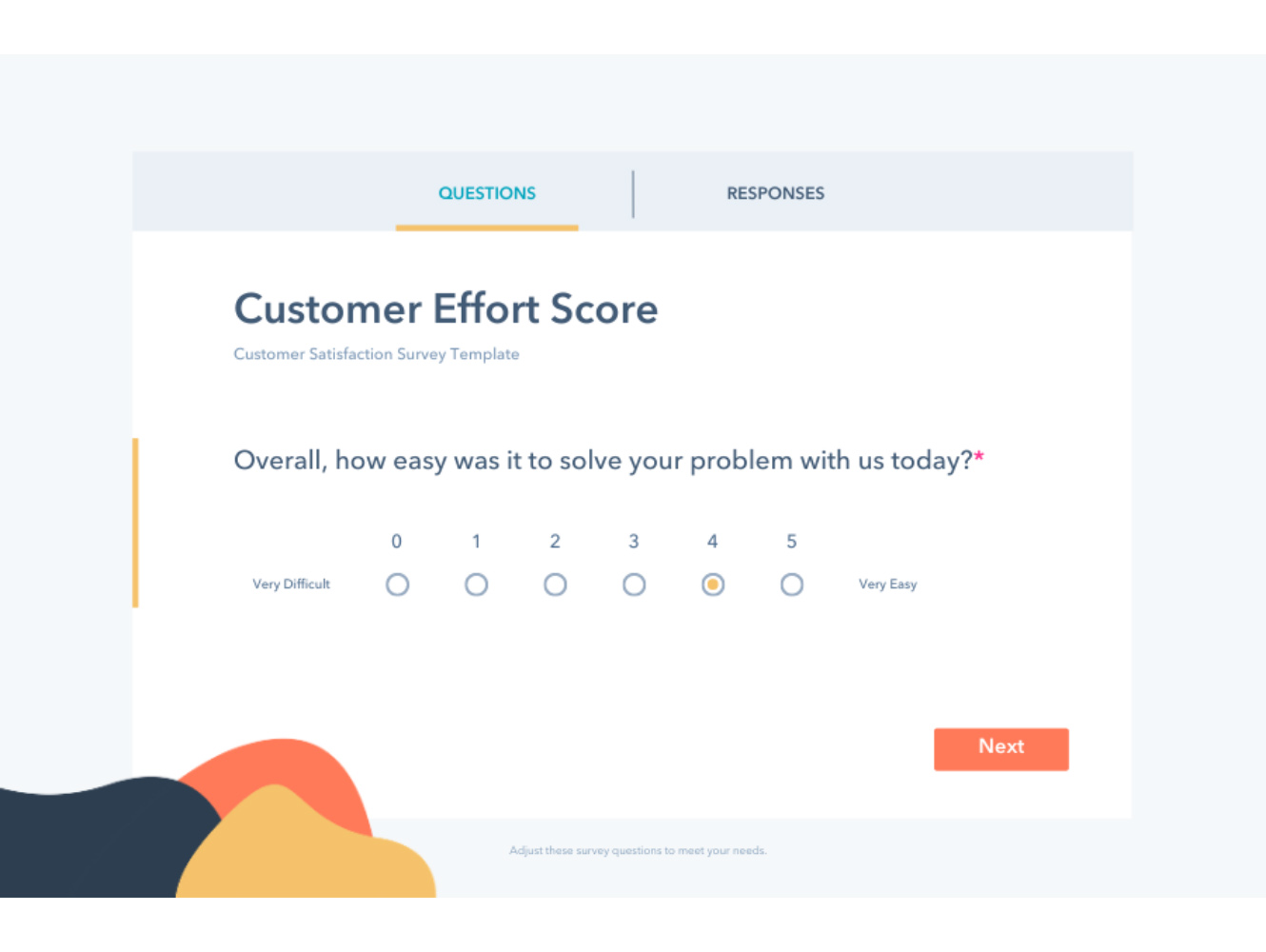Your unique selling proposition (USP) explains why customers should choose your company, service, product, or brand over its competitors. Specifically, it’s a value, product, feature, or benefit of doing business with you that others don’t offer or can’t provide nearly as well as you. In this article, we explore different unique selling proposition examples, explain the benefits of having a strong USP, and offer free templates to get you started.
Download our free unique selling proposition templates and customize them to meet your needs.

Thank you for downloading!
💡 Quick Tip:
Use a platform like MailChimp to send mass email campaigns that share your USP with leads and customers. Mailchimp offers easy-to-use pre-made templates that make it easy to deploy mass email messages.
Unique Selling Proposition Examples
Between online ads, TV commercials, and social media posts, you likely see dozens of unique selling propositions in action every day. Here are some of the best examples of unique selling propositions you may have encountered without realizing it:
“Make your money do the most. Build your portfolio starting with just $1. Invest in stocks, options, and EFTs at your pace and commission-free.”
Why it works/why it stands out:
This online brokerage stood out from the highly competitive financial arena by using a low-price value offering—something that the company’s target customers care about. It believes that financial investment is not exclusive to the wealthy and that anyone can purchase fractional shares with as little as $1, even those with no background in market investment. This strategy also appeals to investors who prefer to start their own trading and investment portfolio with a small amount of money and spread it across multiple platforms.

Robinhood investing platform’s USP: “Make your money do the most” (Source: Robinhood)
“Empowering the world to design. Launched in 2013, Canva is an online design and visual communication platform with a mission to empower everyone in the world to design anything and publish anywhere.”
Why it works/why it stands out:
As an online design platform, Canva focuses on a particular aspect of customer experience—ease of use. Compared to other design platforms, Canva offers features and tools that can be easily used by artists at all experience levels. Its slogan is visible throughout its marketing content. Its free and affordable (starting at $9.99 per month) plans make its user-friendly templates accessible to virtually anyone—truly living up to its USP of empowering the world to create designs conveniently.

Canva’s design platform USP: “Empowering the world to design” (Source: Canva)
“No rest for the wicked. This one’s for the midnight riders + bold souls. Get your hands on this limited-edition, hand-packed coffee and handcrafted mug to keep you fueled through all hours of the night.”
Why it works/why it stands out:
In this unique selling proposition example, the coffee company Death Wish Coffee emphasizes product quality in terms of having a strong taste. By promising “No rest for the wicked,” it confidently hones in on its niche target audience of coffee drinkers who prefer an extremely dark roast. In fact, using strong language or hyperbole in a USP helps a business leave a lasting impression on their target customers.

Death Wish Coffee’s USP: “No Rest for the Wicked” (Source: Death Wish Coffee)
Pro tip: Easily design and deploy mass email campaigns that communicate your USP using email marketing tools like Mailchimp. This platform makes it simple to create and send marketing emails with premade templates and easy drag-and-drop editing tools.

Mailchimp email templates (Source: Medium)
“Connect on SoundCloud. Discover, stream, and share a constantly expanding mix of music from emerging and major artists around the world.”
Why it works/why it stands out:
This music platform’s unique selling proposition is an example of how a business took one aspect of the user experience and turned it into a slogan. Unlike its biggest competitors like Spotify and Apple Music, SoundCloud allows users to share music and podcasts privately or as a released version without having to pay for distribution. In addition, you don’t have to wait for a month before your music appears on the platform. This feature is especially advantageous for startup music artists for exposure among the online streaming community.

SoundCloud USP: “Connect on SoundCloud” (Source: SoundCloud)
Benefits of Having a Strong Unique Selling Point
Defining your USP makes it easier to highlight compelling selling points in sales and marketing campaigns and helps your customers recognize your company’s value to them. For example, as part of your sales plan, you can use your USP to reinforce unique value propositions (UVPs), which focus more on marketing and branding strategy rather than just product benefits. These selling points could be offering customers low prices, high-quality solutions, a particularly special user experience, or superior customer service.
Establishing a USP also produces a number of positive secondary benefits. These can be condensed into four major components:

A solid and specific unique selling proposition sets the tone for what your business is, what it stands for, and how it presents itself. In fact, you can build customer loyalty just from having a good brand image. That said, while a strong USP can contribute to a brand’s identity, you also have to ensure that you deliver consistent messaging and high quality of products or services. This way, you can reinforce loyalty among your existing customers.
Pro tip: One of the ways to build a loyal customer base is to regularly ask for feedback from your customers. Use a customer relationship management (CRM) system like HubSpot CRM, which has built-in survey deployment features.

HubSpot CRM automated satisfaction survey after case resolution (Source: HubSpot)
Your USP serves as a key differentiator compared to competing businesses and alternative solutions. This allows you to focus on what your business does better than others, further setting your company apart and providing specific comparative statements for marketing and sales. As a result, you can increase your profit by selling your differentiated product or service at a higher price. When you maintain the perceived quality of your products, you can also increase customer loyalty and satisfaction.
Pro tip: It’s not easy to come up with a branding statement that sets you apart from all your competitors. Check out our list of branding positioning examples and strategies to get insights from top companies on how to establish your brand identity.
Having an established value proposition helps you develop ready-to-go responses to overcome common objections. You can do this by emphasizing the unique value given to customers who choose your products or services.
Pro tip: Sales objections are not always easy to handle, so reps need to be prepared for it. Follow our guide on how to overcome customer objections, and use our free template to list potential rebuttals and proposed answers.
Because your USP defines your brand, it sets the expectation that your business will deliver the promised value. For instance, you’re a retail shop with a selling point of having the lowest prices in town. Your customers will expect their overall experience to be a small amount of money spent vs other elements like fast checkout, high-end brands, or curbside pickup.
Pro tip: Use limited-time sales offers to promote product value, boost your revenue, or create brand awareness. Check out our article on creative promotional ideas and follow our tips on how to properly implement a sales promotion.
A well-defined USP helps a business create a unique brand identity, overcome customer objections, and establish firm customer expectations based on a promised value. These benefits all help a business succeed by increasing profits and improving customer loyalty.
Frequently Asked Questions (FAQs)
The four categories of USP are price structure, product characteristics, placement strategy, and promotional strategy. Price structure highlights how competitive the cost of your product is in the market, while product characteristics are all about the quality of what you’re offering. Placement strategy is about how convenient the location and distribution of your product are. Promotional strategy, meanwhile, focuses on what differentiates your product from its competitors.
The key elements of a USP include a call to action, differentiation, and a compelling closing. The call to action invites the reader to do something, like buy your product, visit your store, or subscribe to your newsletter. Differentiation is all about what makes your product unique from your competitors in the market. Lastly, your closing should include a promised benefit or what problem your product solves for your customers.
When writing your USP, remember the What + Who + How formula. State what your business does, describe who your ideal customer is, and explain how your product is different from other brands. For best results, keep it short, and don’t be afraid to change it up if it sounds similar to another brand’s USP.
Bottom Line
A key part of sales management involves understanding how to differentiate your small business from competitors and turning it into a unique selling proposition. Through our examples and template, you can develop your own USP that truly makes your business stand out among your competitors. Our pro tips and software suggestions will also help you establish a firm brand identity that helps you close more deals and serve your customers effectively.